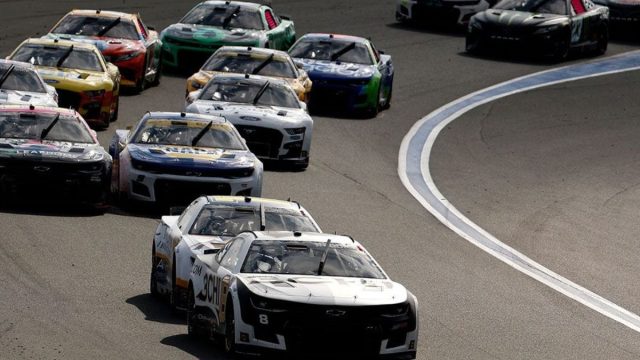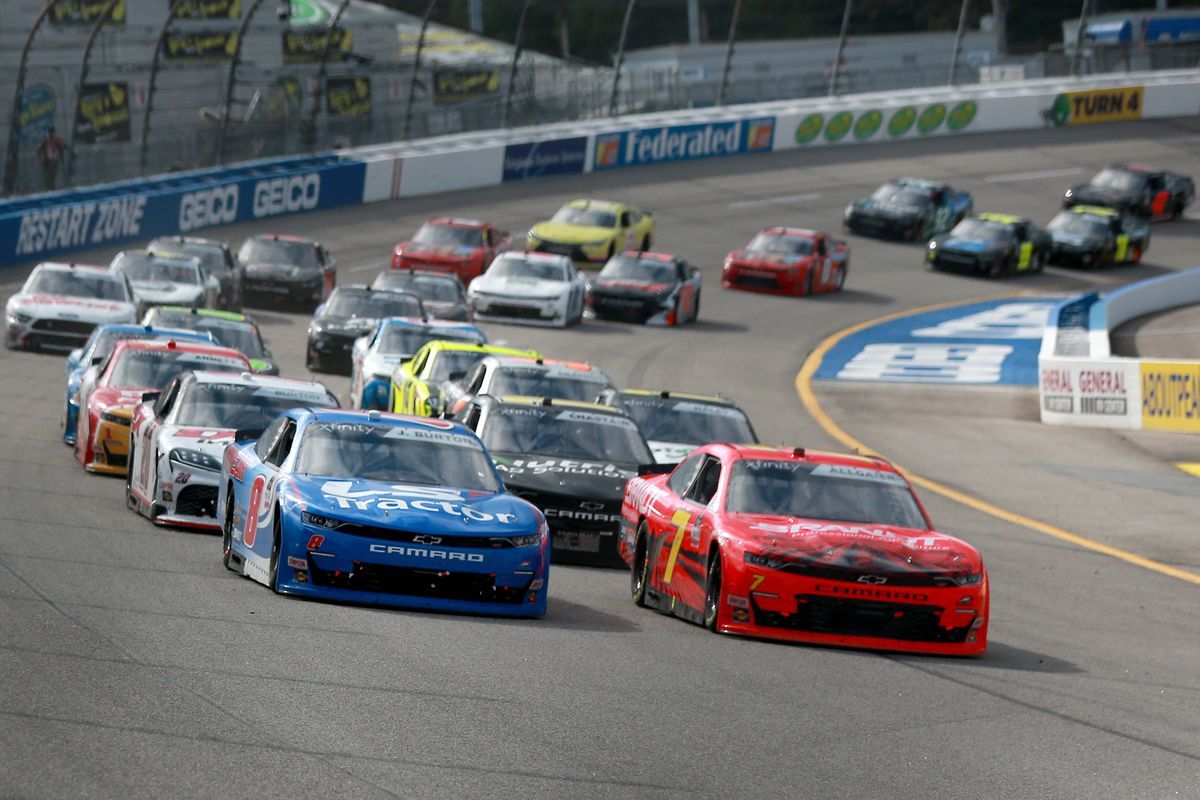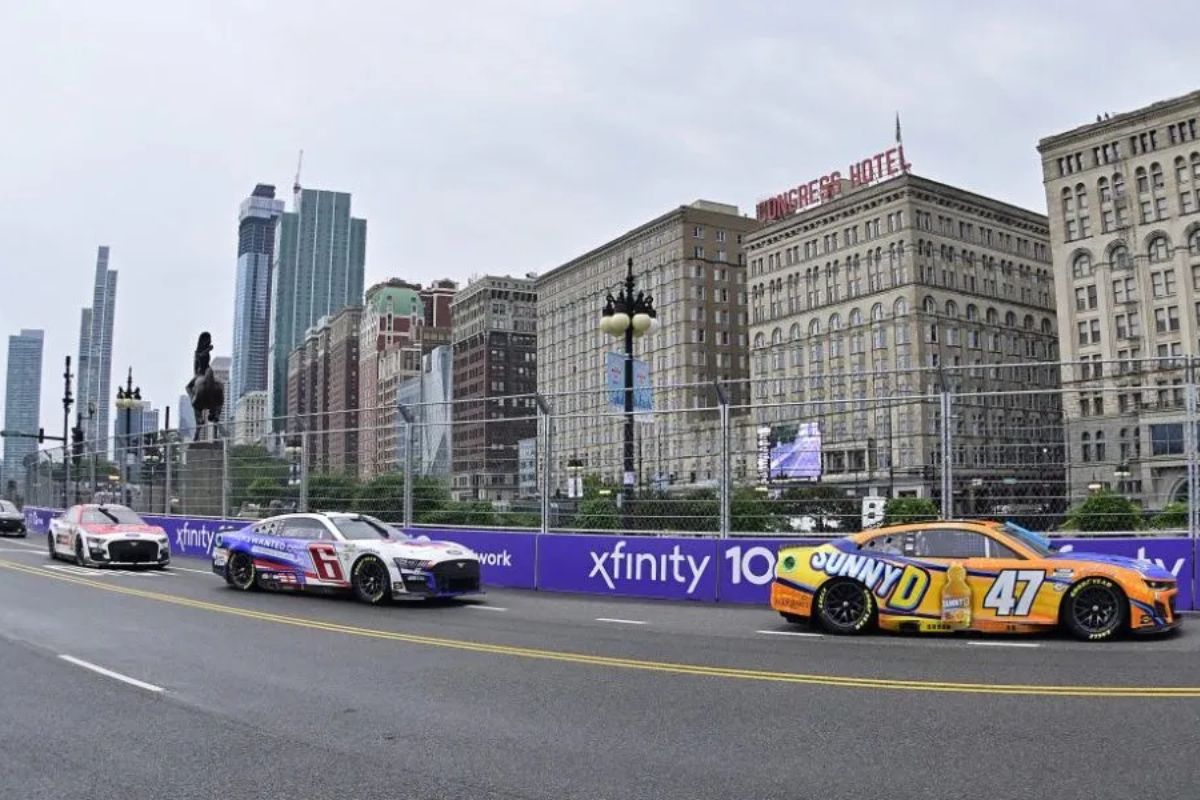Charlotte Road Course Gets Revamp: The Charlotte Motor Speedway‘s road course is set for a thorough overhaul ahead of the 2024 playoff race, introducing a variety of challenging new features designed to enhance the racing spectacle. With extended straightaways, sharper turns, and the incorporation of a challenging hairpin corner, this revamp is intended to increase overtaking opportunities and infuse unpredictability into the competition. Leveraging advanced simulation technology through a partnership with iRacing, the redesign incorporates valuable insights from drivers, teams, and fans equally.
Key Highlights
- Charlotte Motor Speedway’s road course redesign includes new elevation changes, revised corners, and additional overtaking zones.
- The revamped track features elongated straightaways, challenging braking zones, sharper turns, and a new hairpin Turn 7.
- The frontstretch chicane has been reconfigured to introduce more technical challenges.
- Speedway Motorsports partnered with iRacing to design and test the new track layout.
- The goal is to have the revamped course ready well ahead of the October playoff race.
New Layout Announced for Charlotte Motor Speedway Road Course
In a groundbreaking move set to shake up the NASCAR Cup Series playoffs, Charlotte Motor Speedway announced on Sunday that its road course will undergo a significant layout redesign ahead of the October race. This decision marks a strategic shift aimed at enhancing the competitive dynamics of the track, promising to deliver a more thrilling and unpredictable playoff experience for fans and drivers equally.
The current road course, known for its mix of high-speed straights and technical corners, has been a staple in the NASCAR Cup Series playoffs since its introduction. However, the redesign seeks to enhance the level of competition by introducing new elements that challenge the drivers’ skills and strategies. The layout changes are expected to incorporate a variety of features designed to test the versatility and adaptability of the race teams, thereby making the playoff races more intense and engaging.
Charlotte Motor Speedway’s decision is influenced by feedback from drivers, teams, and fans who have expressed a desire for more diverse and challenging road courses in the series. This revamp is poised to address those calls by creating a circuit that blends technical skills with excitement. The redesigned course is anticipated to include additional elevation changes, revised cornering sequences, and potentially new overtaking zones, all aimed at enhancing the spectacle of the race.
With this announcement, the Speedway is not only reaffirming its commitment to innovation but also setting the stage for what could be one of the most memorable playoff races in recent history. As the calendar inches closer to October, all eyes will be on Charlotte to see how these changes unfold and impact the championship battle.
Changes to Track Configuration
Charlotte Motor Speedway’s redesigned road course will prominently feature an elongated straightaway between Turns 5 and 6, creating a more challenging braking zone that leads into a sharper right turn and culminates in a hairpin Turn 7 reconnecting with the oval’s banking. This change is poised to test the skill and nerve of racers, emphasizing precision and control.
The revised configuration is a strategic move to enrich the competitive dynamics of the race, making it a spectacle of driving skill and engineering excellence. The elongated straightaway will provide a crucial overtaking opportunity, demanding drivers to balance speed with the anticipation of the impending braking challenge. The sharper right turn following this straight will require skillful handling, while the hairpin at Turn 7 promises to be a pivotal point where races could be won or lost.
These adjustments are expected to heighten the intensity of the playoff race, demanding heightened levels of driver skill and team strategy. The reimagined turns and straightaway will not only test the physical limits of the vehicles but also the mental fortitude of the drivers. The reconfiguration aims to deliver a more thrilling and unpredictable race, keeping fans on the edge of their seats as competitors navigate the revamped course.
Reconfiguration of Frontstretch Chicane
The frontstretch chicane’s reconfiguration introduces more technical challenges, with Turn 16 now extending farther left toward pit road before evolving into a sequence of 90-degree turns that demand precise handling. This modification transforms the chicane into a critical focal point of the Charlotte Road Course, where drivers must navigate a drastically altered layout that increases both the complexity and the stakes of this segment.
Turn 16’s expansion toward pit road not only elongates the initial entry but also shifts the rhythm of the track, creating a new dynamic that will test the drivers’ adaptability and precision. This adjustment mandates a recalibration of braking points and racing lines, with the introduction of a 90-degree right turn immediately following the extended section. The quick shift into the 90-degree left turn that leads back to the front straightaway at Turn 17 completes the chicane’s transformation, presenting a dual challenge of maintaining speed while ensuring the vehicle’s stability through the sharp turns.
This reconfiguration is expected to have a pronounced impact on race strategy and vehicle setup. Teams will need to focus on optimizing tire grip and suspension settings to handle the abrupt directional changes. The increased technical demands of the chicane could also lead to more overtaking opportunities, as drivers who master this section may gain significant time over their competitors, especially in the closing laps of the race.
Motivation Behind Changes
Recognizing the evolving skill levels of drivers and the need for more competitive racing, Speedway Motorsports CEO Marcus Smith emphasized that the modifications were essential to reinvigorate braking zones and improve overtaking opportunities. This strategic move comes in response to the increasingly sophisticated techniques and tactics employed by drivers, who have grown exceedingly adept at mastering the existing layout of the Charlotte Road Course.
“We were losing braking zones with the style and the way that the drivers figured out how to ascertain the ‘Roval’ layout,” Smith said. “So we pushed out the apex of the frontstretch chicane, Turn 16. And then by extending and skipping that amazing blind right hander that you come up the hill in the infield on Turn 5, we’re skipping that straight into another right hander. It’s going to bring you into a hairpin turn and will take you back out on NASCAR Turn 1. So two really distinct braking zones that are going to really help some for the competition, for the overtaking opportunity.”
Smith’s motivation for these changes is rooted in the desire to enhance the spectator experience and infuse fresh excitement into the playoff race. The current configuration, while challenging, had gradually become less dynamic as drivers mastered its intricacies. By reintroducing more pronounced braking zones, the revised course aims to disrupt these well-established patterns and create new challenges that test the limits of driver skill and strategy.
Enhancing overtaking opportunities was another significant factor driving the redesign. The current layout had been criticized for limiting passing lanes, leading to processional races where the outcome was often predictable. The revamp seeks to address this by creating more areas on the track where drivers can attempt to overtake, thereby fostering a more unpredictable and thrilling competition.
Implementation and Collaboration with iRacing
To bring these ambitious changes to life, Speedway Motorsports has partnered with iRacing to carefully reconstruct the track’s infield, ensuring the modifications are both thorough and conducive to heightened competition. This strategic collaboration utilizes iRacing’s advanced simulation technology to intricately design and test the revamped course, providing a virtual proving ground before any physical alterations are made.
Following the end of the Coca-Cola 600, an iconic event in the NASCAR calendar, the real-world implementation of these changes will begin. The goal is to have all improvements in place well ahead of the October playoff race. The partnership with iRacing is particularly significant as it allows for a detailed analysis of track dynamics, ensuring that every turn, chicane, and straightaway is optimized for both driver safety and competitive racing.
“Once the 600’s finished up, we’ll tear into the dirt and start moving some things around to get this in place by this fall for this (October) race,” Swift said. “We’ve got to make sure geometry (is accurate). And we’ve met with some of the drivers to talk through some of the little nuances to make sure we’re putting in the things in from a safety perspective and a competition perspective for sure.
iRacing’s involvement enables engineers and designers to simulate numerous scenarios, identifying potential issues and making data-driven adjustments in a controlled environment. This process not only minimizes risks but also fosters innovation, allowing the Charlotte Road Course to evolve in ways that might not have been possible with traditional methods alone.
As the October race approaches, the anticipation is palpable, with stakeholders confident that the revamped course will deliver an unforgettable spectacle, blending cutting-edge technology with the timeless thrill of motorsport competition.
News in Brief: Charlotte Road Course Gets Revamp
The redesign of Charlotte Motor Speedway’s road course for the 2024 playoff race exemplifies a strategic improvement aimed at heightening competition and elevating the spectator experience.
By incorporating elongated straightaways, sharper turns, and a hairpin corner, the track promises to challenge drivers while promoting overtaking opportunities.
Collaboration with iRacing highlights a commitment to precision and safety, ensuring that the event will be a groundbreaking spectacle in modern motorsport.
The forthcoming race is anticipated to set a new standard in racing dynamics.
Our Reader’s Queries
Q. Is Charlotte race a road course?
A. The Charlotte Motor Speedway complex spans nearly 2,000 acres and features a variety of tracks. It includes a 2.25-mile road course, a six-tenths-mile karting layout, and a quarter-mile oval within the 1.5-mile superspeedway. Additionally, a one-fifth-mile oval is situated just outside Turn 3.
Q. What is the track configuration of the Charlotte Motor Speedway?
A. In addition to the 1.5-mile quad oval, the Charlotte Motor Speedway complex boasts a 2.25-mile road course and a six-tenths-mile karting layout in the infield. It also features a quarter-mile asphalt oval that incorporates part of the speedway’s frontstretch and pit road, along with a one-fifth-mile oval situated outside Turn 3.
ALSO READ: Charlotte Vs. Daytona: Nascar’s Homecoming Mystery



